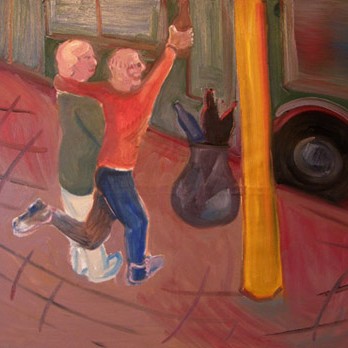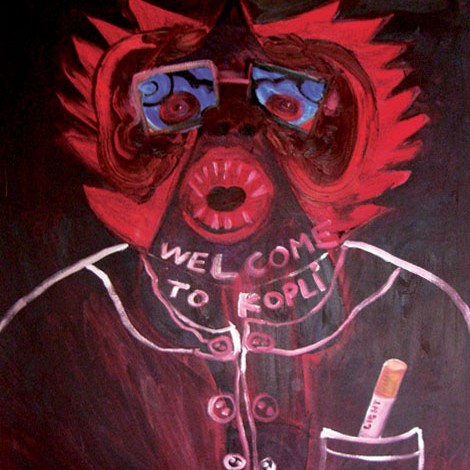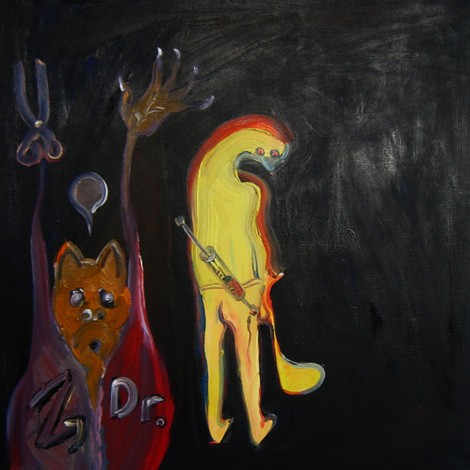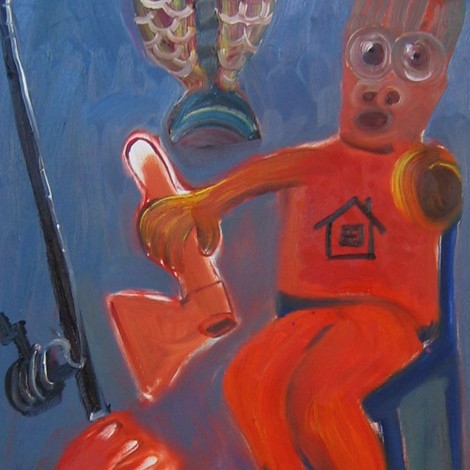Who is a fairy? According to an encyclopedia a fairy is „a supernatural being (the guardian spirit) in folklore that is associated with and watching over a natural object, a building or some phenomenon”. The Estonian word for ‘fairy’, haldjas, is considered to be a loan from the Goths and means a keeper, a possessor, an owner. A house’s first owner could become the house-fairy; the soul of a human that drowned in a lake could become the lake-fairy. In some sense the fairies of Kopli are like the folkloric ones: having sort of left „us” on one hand they still make their presence known every once in a while. For many people Kopli fairies do not exist, at least for most of the time. However they live and function right here, beside us. At least that’s what’s said. There are some who have actually seen them:
„They cry, keep silent, grind their teeth with disappointment, mumble to themselves, strain their jaw muscles in rage, and laugh hysterically. They stand on street corners, watching the passers-by with fiery eyes. When in a group they seem like practical businessmen with a clear goal. They speak Estonian mixed with Russian, yet it is unclear whom they address. They stand alone at the bus-stop sign as if waiting for something.”
As the name suggests, the fairies’ dominion is Kopli. It is a slum but not the hideaway of silent holiness by Nikolai Kummits, the decorative idyll of Lydia Mei or Paul Burman’s world of melancholy etudes. The slum of the latter was the one that surrounded an Estonian aspiring for city life a hundred years ago; the one that surrounds many of us today and tomorrow as well, and where living would be grim unless beauty be found there. The Kopli of these characters, however, jumps (punches, kicks, throws up) in one’s face, randomly and without further thought. There is no sublimity or poetry in this Kopli, yet life is to be lived here, too.
The fairies’ Kopli is not so much a place than a state of mind – a disease, the symptoms of which are a bottle and a syringe, yet which itself is also a symptom of something. That Kopli is a thorn in our collective flesh not letting us forget that the chain is no stronger than its weakest link. The weight of each individual loss adds another stalk into the common load. We may try to deny, cover up and put a mask on that Kopli. Some may pretend that the world exposed in those pictures does not concern them. But that would be a dangerous illusion. Everybody is not even given a luxury of such illusions.
A slave to the needle, staggering behind your apartment’s door recovering from the shot, brings the fairies’ Kopli so close that no room is left for existentialist mumble. Rait Rosin does not mumble. He penetrates more-or-less so deep into that world as is possible without being engulfed by it. Stopping on the verge of the abyss he reveals us the world in the deep: in paint and video to which Gerhard Lock’s background sound adds an additional dimension. This is how those beings might portray their (our common) misery themselves if they had the eye, the hand and a touch of humour to do that. And if they saw a point in that portrayal. Yet there is a point – if not for them then the more so for the rest of us. Because actually “we” have more in common with “them” than anyone can imagine.
Martin Jänes
.png)



